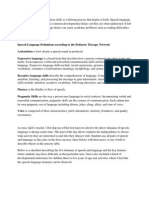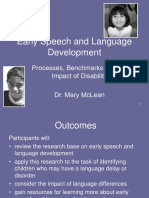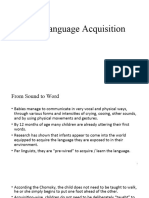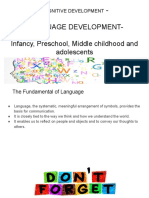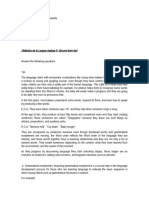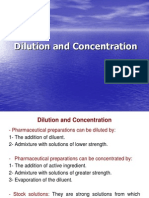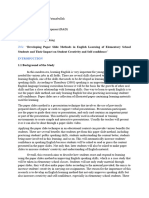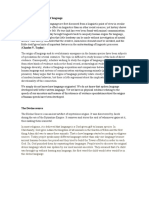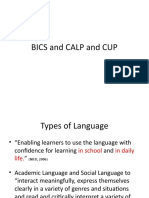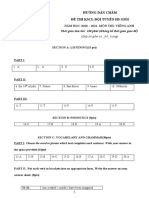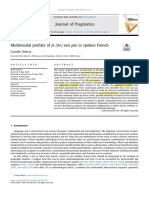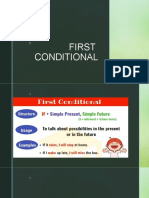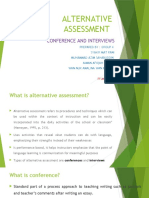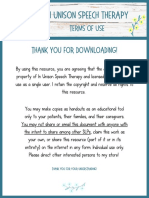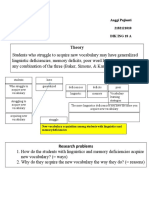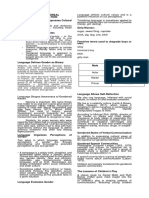0% found this document useful (0 votes)
71 views14 pages5.1 Language Development
Language development progresses from comprehension of sounds in the first year to production of first words between 10-15 months, a rapid vocabulary growth period between 18-24 months, grammar developing between 2-3 years shown through telegraphic speech and early pragmatics, and continues to social speech and more advanced communication skills into the school-age years as language becomes an important tool for thinking and self-regulation.
Uploaded by
Jacinta SmithCopyright
© © All Rights Reserved
We take content rights seriously. If you suspect this is your content, claim it here.
Available Formats
Download as PDF, TXT or read online on Scribd
0% found this document useful (0 votes)
71 views14 pages5.1 Language Development
Language development progresses from comprehension of sounds in the first year to production of first words between 10-15 months, a rapid vocabulary growth period between 18-24 months, grammar developing between 2-3 years shown through telegraphic speech and early pragmatics, and continues to social speech and more advanced communication skills into the school-age years as language becomes an important tool for thinking and self-regulation.
Uploaded by
Jacinta SmithCopyright
© © All Rights Reserved
We take content rights seriously. If you suspect this is your content, claim it here.
Available Formats
Download as PDF, TXT or read online on Scribd
/ 14














